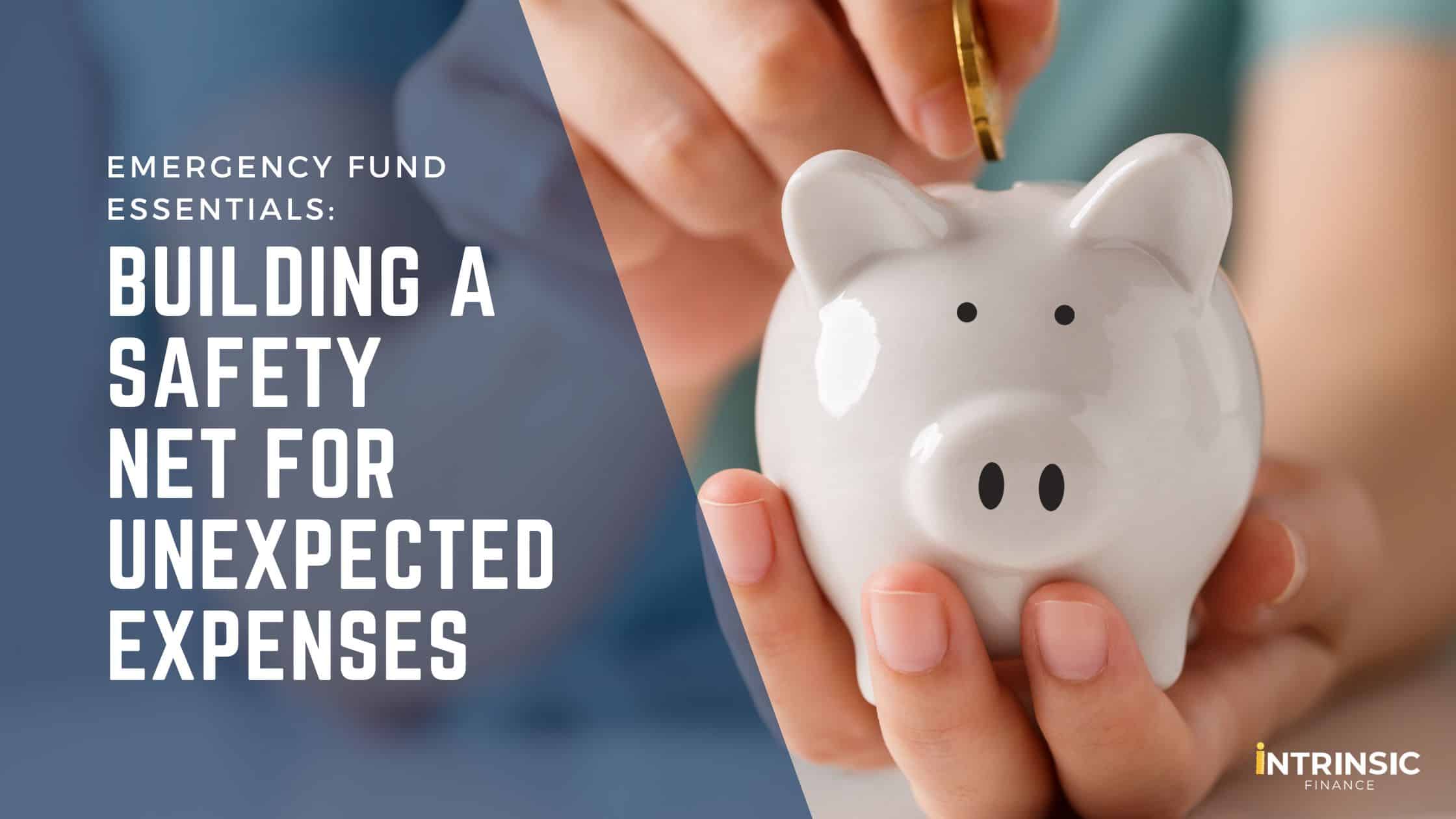Life is full of surprises, both good and bad. While we often focus on the exciting twists and turns, the unexpected financial curveballs can be downright stressful. From a sudden job loss to a costly car repair, emergencies can arise without warning, leaving you scrambling to cover the costs. That’s where an emergency fund comes in.
An emergency fund is your financial safety net, a dedicated savings account designed to cushion the blow of unexpected expenses. It’s your insurance policy against life’s uncertainties, offering peace of mind and financial security when you need it most. Even something as significant as used car financing can be absorbed without undue stress if you have a robust emergency fund.
Emergency Fund Essentials: Building a Safety Net
Life is unpredictable. Unexpected expenses can arise at any time, from medical bills to car repairs or job loss. An emergency fund is your financial lifeline, offering peace of mind and stability during tough times.
Building a robust emergency fund is crucial for financial security. By setting clear goals, prioritising savings, creating a budget, and automating contributions, you can make a safety net to protect yourself from unexpected challenges.
Let’s dive into the steps to building your emergency fund:
Setting Clear Goals
- Assess your financial situation: Consider income, expenses, debts, and dependents.
- Determine a realistic savings target: Aim for 3-6 months’ worth of living expenses as a starting point.
- Prioritise high-impact expenses: Focus on essential costs like housing, utilities, and transportation.
- Consider a tiered emergency fund: Build a smaller fund quickly, then gradually increase it to your target.
Prioritising Savings
- Make saving automatic: Set up automatic transfers to your savings account.
- Treat savings as a non-negotiable expense: Allocate a specific amount to your emergency fund each month.
- Explore additional income streams: Consider side hustles or part-time work to boost savings.
- Review your spending habits: Identify areas where you can cut back and redirect funds to savings.
Creating a Budget
- Track income and expenses: Use budgeting tools or spreadsheets to monitor your finances.
- Categorise spending: Identify essential and discretionary expenses.
- Find cost-saving opportunities: Look for discounts, coupons, and cheaper alternatives.
- Review your budget regularly: Adjust as needed to reflect changes in income or expenses.
Automating Savings
- Set up automatic transfers: Schedule regular transfers to your savings account.
- Consider using high-yield savings accounts: Maximise your earnings on your emergency fund.
- Review your savings goals: Adjust transfer amounts as needed to reach your target.
- Monitor your account balance: Ensure you maintain an adequate emergency fund.
Where to Keep Your Emergency Fund
High-Yield Savings Accounts
A high-yield savings account is a popular choice for storing emergency funds due to its combination of safety and earning potential. These accounts typically offer higher interest rates than traditional savings accounts, allowing your money to grow over time. The funds are readily accessible when needed, providing liquidity in case of unexpected expenses.
Accessibility
Ensuring quick access to your emergency fund is paramount. Opt for a savings account with minimal withdrawal restrictions or penalties. Avoid investment vehicles like stocks, bonds, or real estate, as these assets may fluctuate in value and can be difficult to liquidate quickly in times of crisis.
Avoiding Temptation
To protect your emergency fund from impulsive spending, consider these strategies:
- Dedicated Account: Open a separate savings account solely for your emergency fund. This mental separation can help deter you from using the money for non-emergency purposes.
- Clear Guidelines: Define what constitutes an emergency expense. This will help you make rational decisions when faced with unexpected costs.
- Budgeting Tools: Use budgeting apps or spreadsheets to track your income and expenses. This can help you identify potential savings and reduce the need to dip into your emergency fund.
Overcoming Obstacles
Building a substantial emergency fund takes time and discipline. Here are some strategies to help you overcome challenges:
Small Steps
Start by saving small amounts consistently. Even saving a little each month can add up over time. As your income increases, gradually raise your savings contributions. Remember, progress, not perfection, is key.
Dealing with Setbacks
Life is unpredictable, and you may need to use your emergency fund for unforeseen circumstances. When this happens, focus on rebuilding your fund as quickly as possible. Prioritize saving, explore additional income sources, and consider cutting back on non-essential expenses to accelerate the process.
Seeking Professional Advice
A financial advisor can provide valuable guidance on building and managing your emergency fund. They can help you assess your financial situation, set realistic goals, and develop a personalized savings plan.
Maintaining Your Emergency Fund
Building an emergency fund is a significant step towards financial security, but maintaining it is equally crucial.
Regular Reviews
Your financial situation can change over time. Therefore, it’s essential to regularly review your emergency fund. Consider these factors:
- Inflation: The purchasing power of your money can erode over time due to inflation. Adjust your emergency fund accordingly to maintain its effectiveness.
- Life Changes: Major life events like marriage, childbirth, or job changes may necessitate changes to your emergency fund.
- Financial Goals: As your financial goals evolve, you might need to reassess the size of your emergency fund.
Replenishing After Use
If you need to dip into your emergency fund, prioritize rebuilding it immediately. Treat replenishing your emergency fund like any other essential bill.
- Budgeting: Adjust your budget to accommodate additional savings towards your emergency fund.
- Side Hustles: Consider taking on extra work or starting a side hustle to accelerate the rebuilding process.
- Avoid Debt: Refrain from using credit cards to rebuild your emergency fund, as interest charges can hinder your progress.
Emergency Fund as a Lifelong Tool
An emergency fund is not a one-time goal; it’s a continuous financial tool. Maintaining a well-funded emergency fund provides ongoing peace of mind and financial stability.
- Long-Term Security: A robust emergency fund can protect you from unexpected financial setbacks throughout your life.
- Reduced Stress: Knowing you have a financial safety net can alleviate stress and anxiety.
- Financial Independence: An emergency fund empowers you to make decisions without relying on loans or credit.
Conclusion
Building and maintaining an emergency fund is a cornerstone of financial stability. By setting clear savings goals, prioritizing savings, creating a budget, and automating contributions, you can make a safety net to protect yourself from unexpected life events.
Remember, your emergency fund is a dynamic tool that requires regular attention. Review your savings regularly, replenish them after use, and adapt them to your changing financial circumstances.
Don’t wait for an emergency to strike. Start building your emergency fund today. Taking control of your finances empowers you to navigate life’s challenges with confidence.
Ready to take the next step? Learn more about how Intrinsic Finance can help you achieve your financial goals with easy car loans. Visit Intrinsic Finance today and drive off into a brighter financial future.

